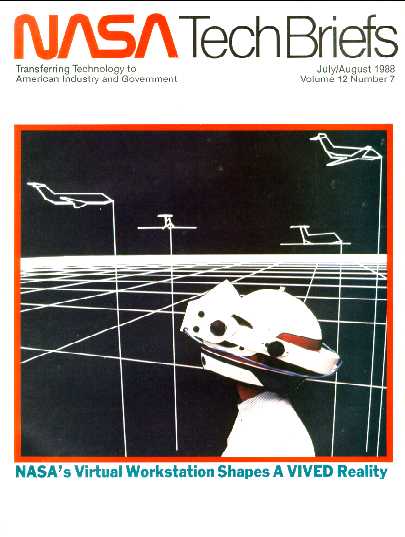
The Virtual Environment Workstation was an early virtual reality system, developed in the mid-1980's at NASA's Ames Research Center in Mountain View, California. The software for the first prototype of the system was developed by Warren Robinett, working in collaboration with NASA scientists Scott S. Fisher and Michael McGreevy.
The first virtual-reality system, built by Ivan Sutherland in the late
1960's, was quite expensive and contained many custom-built components,
and even so, could display only a very simplistic virtual world.
The availability in the mid-1980's of small, cheap LCD televisions
and more powerful computer graphics machines from Silicon
Graphics Inc. made it possible to create a more capable VR system.
The first prototype of the NASA Virtual Environment Workstation was built
from a motorcycle helmet, Watchman LCD displays, wide-angle stereoscopic
optics, and a Polhemus magnetic head-position tracker.
Fisher, Scott S., James Humphries, Michael McGreevy, Warren Robinett, "The Virtual Environment Display System," 1986 ACM Workshop on Interactive 3D Graphics.
Foley, James D., 'Interfaces for Advanced Computing" (cover story), Scientific American magazine, October 1987.